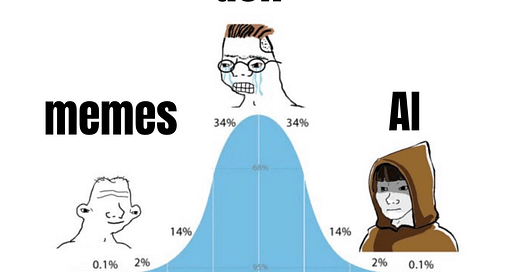If you’ve known me for a while, you can tell that I am far from being a DeFi enthusiast. Don’t get me wrong, I believe it is a natural evolution of current finances and ways of lending, financing, and pulling out some yield from our assets.
However, I believe that high speculation is one of the reasons for the lack of adoption and misinformation in the mainstream. Is very easy to get excited about the possibility of becoming rich in a matter of days, or months effortlessly just by playing your crypto investment correctly. The truth is that this is a full-time job and most of the people I know who are in DeFi as their main source of income, are doing well but far from becoming millionaires. The possibility of becoming a millionaire by predicting the next trending token is more or less like betting in the lottery and if you want to do this for a living is more or less like being a professional poker star. You need to have a lot of stomach to handle the market inconsistency.
But what will happen when we build AI capable of following real-time trends and predicting and programming transactions based on real-time scenarios? Is there a way to train AI to find specific patterns? In data science, there is a set of algorithms called pathfinders, and they are getting into to DeFi world.
First I want to give a brief explanation of how does DeFi works and how you make money. DeFi stands for decentralized finance, and the best way to make money out of it is through yield farming. That is just allocating your assets (tokens) based on a specific set of conditions that provide liquidity to a project.
Now how does Pathfinders play an important role here? The goal of a pathfinding algorithm is to explore a graph to find the optimal path from a starting point to a destination point while considering obstacles, barriers, and other constraints.
Data scientists use this kind of algorithm in Logistics, Robotics, Video Games, and lately in DeFi.
How do they apply in DeFi?
AI Pathfinders aka Pathfinder algorithms, can evaluate various yield farming opportunities across multiple DeFi platforms in real-time. By employing algorithms like Dijkstra’s (An algorithm able to find the shortest path between nodes in a weighted graph) and A*(Same as Dijkstra, but through a traversal graph), they can identify the most profitable paths for asset allocation, taking into account transaction fees, slippage, and potential returns. For instance, an AI Pathfinder can analyze different liquidity pools and determine the optimal allocation of assets to maximize yield while minimizing risks associated with impermanent loss.
There is also a specific pathfinder algorithm for cycle detection. Through a cycle detection algorithm, we can identify potential risks in liquidity pools, such as the likelihood of a sudden market downturn or high volatility in asset prices. By continuously monitoring market conditions and liquidity flows, these algorithms can alert users to potential risks, allowing them to adjust their strategies proactively. This capability is crucial for maintaining the stability of investments in a highly volatile environment like DeFi.
Maximum Flow algorithm is used to find the maximum amount of “flow” that can pass through a graph network of connected nodes or vertices. These systems can identify bottlenecks or inefficiencies in liquidity distribution, enabling users to optimize their strategies and improve overall liquidity management.
AI Pathfinders can also optimize smart contract interactions by determining the most efficient paths for executing transactions. By analyzing the underlying blockchain network and its congestion levels, these AI systems can suggest the best times and methods for executing trades or liquidity provisions, thereby reducing gas fees and improving overall efficiency.
Yes and if we go deep, we can find ways to automate our balance distribution and even the whole investment strategy executed.
Large players like BlackRock announced their AIM Augmented Investment portfolio last year. A framework to enhance proprietary AI models for portfolio management.
In a world where we will be able to program our money to multiply itself, once again AI brings the promise of abundance in a world where scarcity has been the currency. In the end, someone needs to pay the credit interest for all this “yield”.





